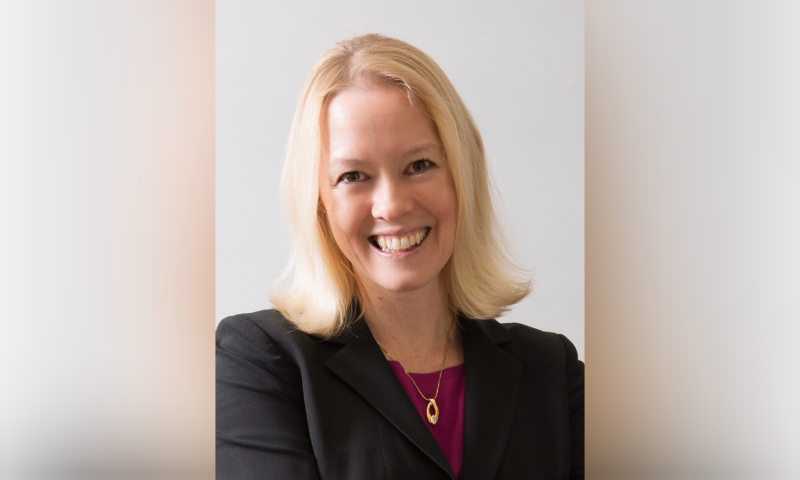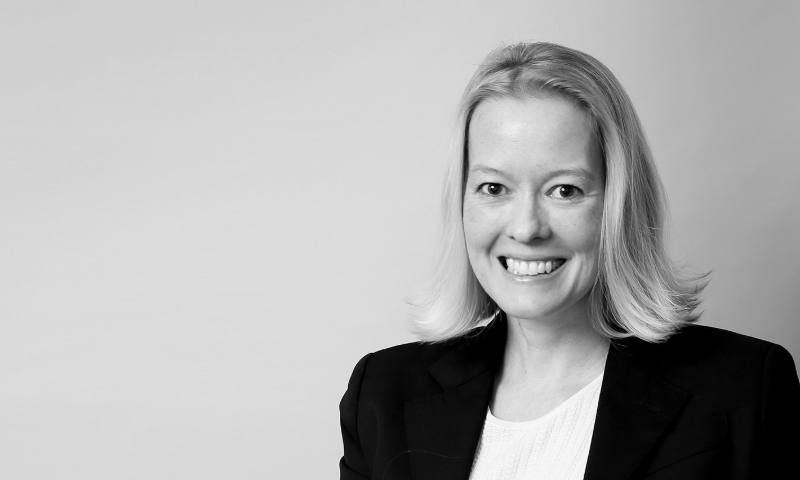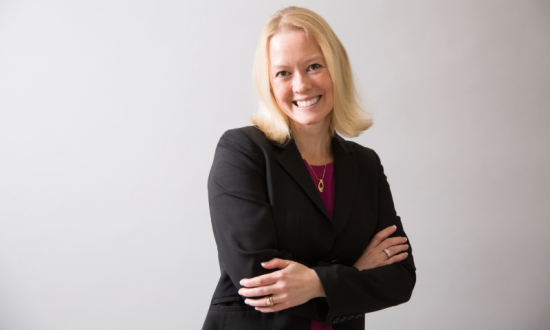Mary Poppen is President and Chief Customer Officer of HRIZONS EX and Professor of Practice at Michigan State University teaching in the Customer Experience Management Master’s Degree program (MS-CXM). She is also a CS Angel investor. Prior to her current focus, Mary was Glint’s Chief Customer Officer at LinkedIn and Chief Customer Officer for SAP’s Global Cloud business before that. Mary holds a Master’s Degree in Industrial/Organizational Psychology and has over 20 years of customer delivery, business consulting and executive leadership experience. She is a well-recognized customer and employee experience thought leader, speaking at global events and authoring several publications in this space. She recently published a book entitled “Goodbye, Churn. Hello, Growth!”
Recently, in an exclusive interview with CXO Magazine, Mary shared her professional trajectory, the major takeaways from her latest book, future plans, words of wisdom, and much more. The following excerpts are taken from the interview.
Hi Mary. How did you first get into customer experience, and what inspires you to stay?
I started in “Customer Experience” long before today’s understanding. I began working for SuccessFactors, the first HCM SaaS solution, in the early days, before Software as a Service was understood. As expected, the traditional software delivery of the on-premise days was applied to SaaS and sure enough the customer received implementation services and technical support, but the actual adoption of the software was highly unmonitored. I like to say it was moving from “Building Houses” (on-premise) to “Renting Apartments” (SaaS). With SaaS, if you didn’t like your landlord or the apartment building, you could up and leave quite easily, unlike the traditional on-premise software deployments. SaaS changed the focus of software from product-centric to customer-centric. It was an opportunity to put the customer at the center of the value proposition. This was the era of refining what customer success and value meant and put Customer Experience in the forefront of delivering on it. I was fortunate to have had the opportunity to be involved in shaping customer-centric software and delivery from the beginning, and I’ve remained in CX because there is still so much innovation and evolution to be a part of.
What do you love the most about your current role as President and Chief Customer Officer, Employee Experience Division at HRIZONS?
As a customer-focused service provider of HR technology, there is an opportunity to innovate and personalize around the customer’s specific unique business requirements and outcomes. I get inspired by the opportunity to do things differently to drive value for customers, employees and for the company. There is a significant linkage between employee and customer experience. This is something I’m very passionate about and continue to have an opportunity to impact in my current role.

Can you please share the major takeaways from your book, “Goodbye, Churn. Hello, Growth!”?
I wrote the book to focus on the evolution of how far we have come with putting customers at the center of our businesses and what that means to revenue. Companies that still focus solely on revenue growth and product innovation are missing the boat on the true impact of customer success. When customers are at the center of your business, great things happen for the customers, the employees and the company results! The book is a guide for deploying a more customer-centric focus in order to create “WOW” outcomes for your company, your employees and your customers!
You are also a Professor at Michigan State University. Can you please tell us about the courses/programs taught by you and its relevance in today’s business landscape?
The first Master’s Degree in Customer Experience Management (MS-CXM) was rolled out by MSU just a couple of years ago. While there are certificate programs in CX offered by other organizations and universities, this is the first true Master’s of Science degree in the field. The degree program covers the full gamet of customer experience topics including journey mapping, design thinking, customer relationship management, measurement strategies, building a customer-centric culture, and one of the key tracks is around employee experience and engagement. As there is considerable synergy between EX and CX, the program ensures a focus on how to foster, build and sustain robust employee experiences and engagement programs. I teach the Employee Engagement course and designed it to cover how employee programs relate to customer programs and how both impact one another as well as organizational results. If anyone reading would like to explore earning an innovative advanced degree in CXM, please reach out to me on LinkedIn and/or go to this link for more information: https://broad.msu.edu/masters/customer-experience-management/
In your experience, how can organizations effectively bridge the gap between customer experience (CX), employee experience (EX), and user experience (UX) to create a holistic approach that benefits all stakeholders?
Throughout my career, one thing has remained consistent: companies operate in silos. After years of working to break down silos to deliver better customer experiences, I have seen something interesting happen when teams in different departments collaborate. They realize better outcomes not just for customers, but for all key stakeholders. To achieve this, I envision a single business function that unites the work of all organizational departments in order to align and integrate the experiences of all business stakeholders. And while it may seem idealistic, it can become a reality if organizations centralize the design, delivery, measurement and cross-functional collaboration needed for all experience programs.
That’s my vision for Total Experience, or TX. My definition of Total Experience is simply “Alignment and integration of all stakeholder experiences.” This includes Customer Experience (CX), Employee Experience (EX), User Experience (UX) (including patient experience), and Partner Experience (PX). It goes beyond traditional business paradigms, recognizing the interconnectedness of organizational stakeholders. The outcome of successful TX is (drumroll)…increased revenue.

How do you see the role of technology, specifically data analytics and AI, in shaping the future of customer experience? Are there any specific tools or platforms that you believe are essential for organizations to adopt?
CX technology needs to ingest data from multiple sources, analyze it holistically, and create insights so that teams can be proactive and personalized in their delivery. AI is critical to scale this and Customer Intelligence is becoming extremely important as a focus for organizations. After decades of collecting data on customers across functions, it’s time to bring the data together to tell a story on what drives customer success and double down on actions (across all functions in the organization) that will retain and grow customers. In addition, the tech stack needs to align to drive meaningful and value-add experiences and outcomes for customers. Siloed data and processes are no longer going to differentiate the customer experience and create value for customers. The entire customer journey (from prospect to renewal/expansion) must align and be cohesive. Data and AI will help achieve this outcome. Customer Intelligence, applying customer behavior and sentiment to priorities and resources, will become more and more critical for organizations to compete and succeed in the future. There is massive opportunity for innovation in this space to deliver on the above. I can’t wait to see what technology is released over the next few years to address this need!
Looking back now, what is one thing you wish you knew at the beginning of your career?
How to tell the story of my team’s impact to revenue growth! One of the biggest challenges for customer teams is to align to revenue growth. CS and CX teams don’t typically get investment and prioritization unless you can show revenue outcomes for the organization. Luckily, I had access to amazing Operations teams who helped me show the linkage of my customer teams to revenue. I wish I had started my career with the knowledge I have now about how best to link CX activities directly to business results. It would have saved me many nights of budget justification activity!
What are your passions outside of work?
I enjoy traveling with my husband and two sons, playing Pickleball, and wine-tasting with friends. I also enjoy mentoring early CX professionals and coaching female leaders.
Where do you see yourself in the next 5 years?
I can see myself semi-retired focused on traveling and exploring new destinations with my husband while also continuing to share the knowledge and experience I’ve gained through consulting, advising, and educator roles.

What are your tips for delivering great CX with a limited budget?
There are several low-cost opportunities to enhance your customers’ experiences. Consider using customer data to personalize interactions. Even small touches, like congratulating customers on their anniversary as a customer, can make a big difference. You can also use existing data to segment your customers based on their behavior and preferences to provide tailored experiences. Also, work to identify and eliminate inefficiencies in your processes; consider providing self-service options such as FAQs, knowledge bases, and how-to videos to empower customers to find answers on their own. Conduct Quarterly Value Reviews to engage the customer and discuss the success of the partnership. Foster a sense of community among your customers through online forums, social media groups, or events. Partner with other businesses to offer complementary services or products that enhance your customer’s experience. Any of the above actions will have a positive impact for your customers while mitigating additional cost.
What is the one trend or approach in CX that every organization should be implementing?
Personalization at scale! My definition of personalization is being able to deliver the right information to the right person in the right way at the right time. This applies to individuals as well as organizations. I love to talk about “Customer Intimacy” and being able to personalize the experience for every customer is the pinnacle of reaching true customer intimacy. You’ve likely heard customers say “we’re different” or “our requirements are unique” to which you may snicker to yourself, but the reality is they are right. All customers are like snowflakes. No matter how similar in industry, size, complexity, there will always be uniqueness in culture, leadership, maturity, etc. Every customer should be considered in light of their own situation. However, delivering a customer experience that is unique to every customer is not easy.
Enter the linkage between technology innovations and data! Specifically, leveraging AI for personalization. It is now possible to leverage the data you’ve been collecting on your customers for years to understand how past behavior can translate into predicting future behavior. This in turn allows you to get ahead of the likely outcomes and take action to influence the direction. It involves leveraging data, technology, and insights to tailor experiences in a way that makes them more relevant, engaging, and valuable to the individual. If done well, personalization at scale helps foster stronger relationships, increases engagement and satisfaction, and ultimately drives loyalty, productivity and revenue growth.

